This National Park Has the World’s Tallest Trees — Plus Beaches, Fern-lined Canyons, and Great Camping
Find the world's tallest trees, lush canyons, and incredible hikes at Redwood National and State Parks.
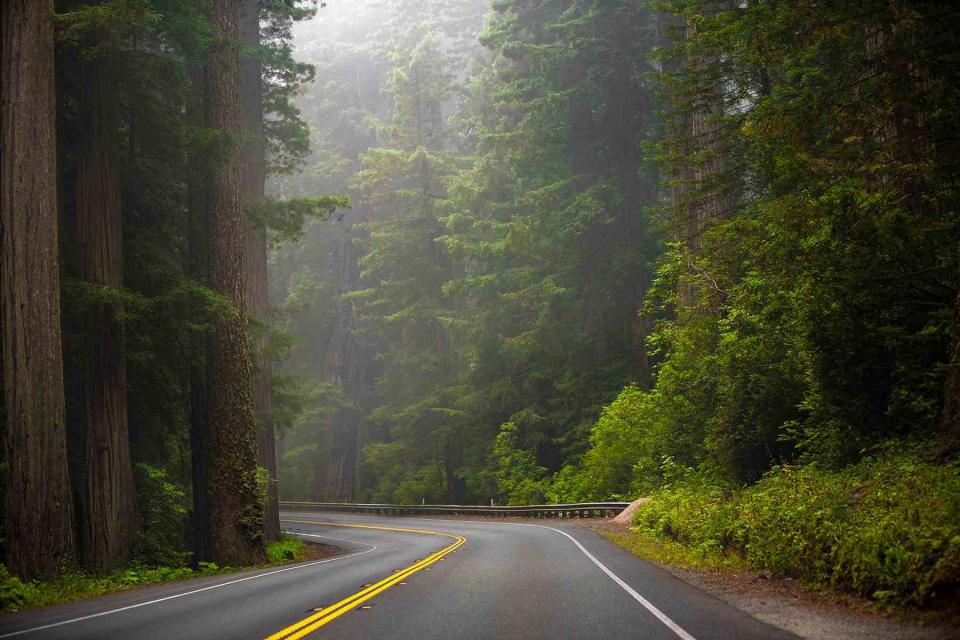
Carmen MartÃnez Torrón/Getty Images
Walking among the world’s tallest trees is a breathtaking experience, but the towering trees found within Redwood National and State Parks are just one of the many wonders waiting to be discovered. The parks’ 131,983 acres, managed by both the National Park Service (NPS) and California State Parks, include a mosaic of terrain, including grasslands, oak woodlands, and 40 miles of rugged coastline. Travelers come from all over the world to walk along the lush Fern Canyon, made famous by "The Lost World: Jurassic Park," or to glimpse the California condor, a once-extinct species that returned to the park in March 2022.
The various landscapes ensure there is truly something for everyone — hiking trails wind around ancient redwoods, scenic drives run up the coast, and bike trails cut through second-growth forests. The parks boast 200 miles of hiking, biking, and horseback trails that lead to remote backcountry campsites and seaside activities that include tide pools and lounging California sea lions.
Here’s everything you need to know to plan a trip to Redwood National and State Parks — no matter which landscape you have your heart set on.
Related: The 25 Best National Parks in the U.S.
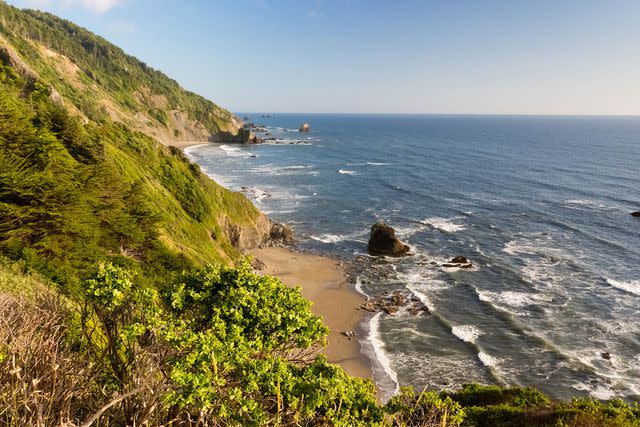
KenCanning/Getty Images
Things to Do in Redwood National and State Parks
There’s plenty to do in Redwood National and State Parks, but for most people, two activities stand out: hiking the Tall Trees Trail and visiting Gold Bluffs Beach, home to Fern Canyon.
The Tall Trees Trail is a 4.5-mile round-trip hike that passes through a grove of impressively large trees in a more remote section of the park. The hike is considered to be moderate to strenuous. Permits are free, but limited, and can be reserved up to 180 days in advance on the NPS website.
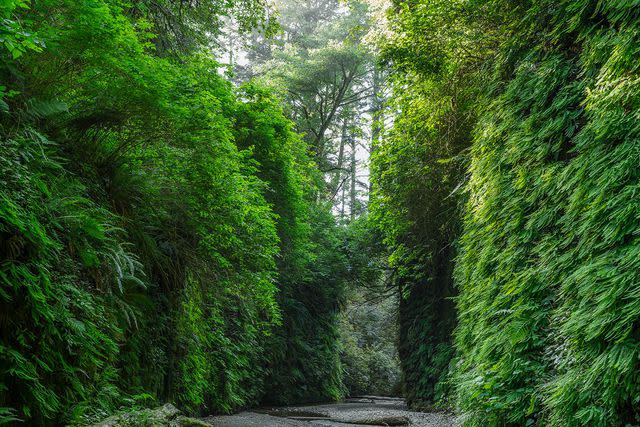
HadelProductions/Getty Images
Visitors who want to visit Gold Bluffs Beach and Fern Canyon between May 1 and September 30 must apply for a permit. Permits are free and available on a first-come, first-served basis here.
In addition to the parks’ more renowned sites, there are over 200 miles of hiking, biking, and horse trails. The moderately difficult Trillium Falls Trail passes through old-growth redwoods and meanders past Trillium Falls. Roosevelt elk are often spotted along this almost three-mile loop. If you have your heart set on walking along the coast, hop on the Coastal Trail, which starts at the Crescent Beach Overlook. From there, the 13-mile round-trip trail parallels the ocean, offering endless views over the water and a visit to Enderts Beach.
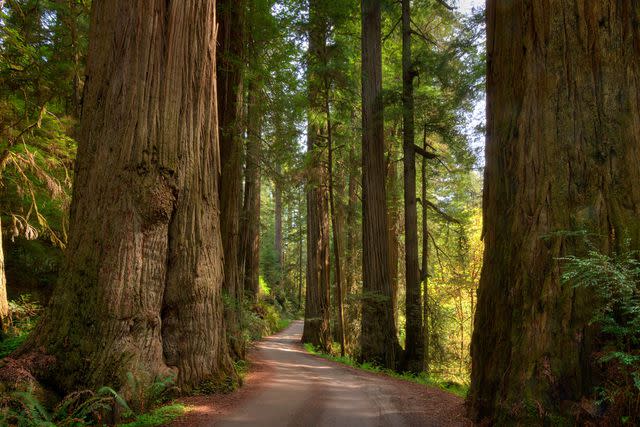
Ed Freeman/Getty Images
Redwood National and State Parks Camping
There are no hotels within the parks, so those looking for a more traditional night’s sleep should visit the neighboring communities. That said, two of the campgrounds within the parks — Jedediah Smith and Elk Prairie — have cabins to rent, and all four developed campgrounds — Jedediah Smith, Mill Creek, Elk Prairie, and Gold Bluffs Beach — have tent and RV sites with flush toilets and showers.
Camping at Elk Prairie and Gold Bluffs is available year round, while Jedediah Smith and Mill Creek are only open in the summer. All four campsites cost $35 a night and require advance reservations (see here for Elk Prairie and Gold Bluff reservations and here for Jedediah Smith and Mill Creek reservations).
In addition to four developed campgrounds, the parks have seven designated backcountry camps that can be accessed by foot, bicycle, or horseback. All designated backcountry camps — except the dispersed campsites on Redwood Creek gravel bars — have picnic tables and food storage lockers. All but 44 Camp have toilets. All backcountry campers must apply for a backcountry camping permit in advance.
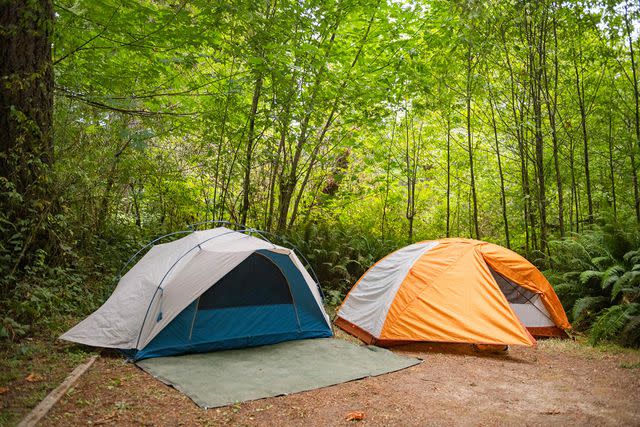
Boogich/Getty Images
When to Visit Redwood National and State Parks
The parks are open daily, year round, and thanks to Northern California’s mild weather, visitors don’t have to battle extreme cold or heat. January tends to be the coldest month, with average lows of 39.5 degrees Fahrenheit, while August and September tend to be the warmest, both averaging highs of over 67 degrees.
At Redwood National and State Parks, rain tends to be the biggest deterrent. If you have your heart set on a hike or beach day, visit between May and September, when rain is less likely.
For more Travel & Leisure news, make sure to sign up for our newsletter!
Read the original article on Travel & Leisure.

